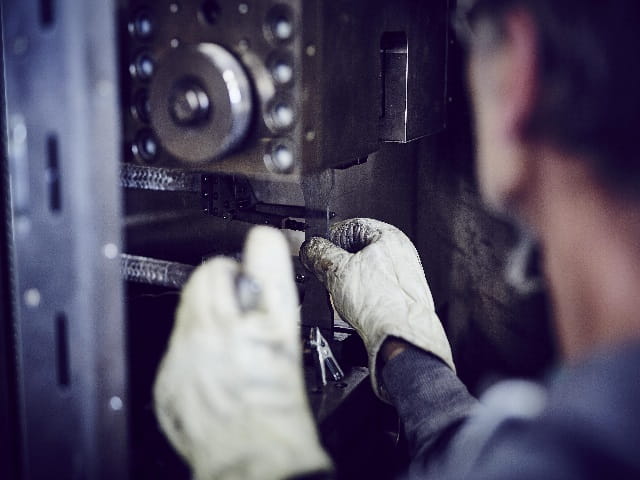Optimizing structure-property relationship in ductile iron
Through a global review of the cast iron literature and a multiphase physical metallurgy study, Element’s metallurgical experts characterize the relationship between the metal matrix, alloy content, and tensile properties in ductile iron to achieve a higher combination of strength and ductility.
A literature review showed that no extensive research work had been conducted to determine what is required to achieve 80-50-06 properties consistently. Our experts’ research developed an understanding of the relationship between alloying elements, matrix microstructure and properties in ductile iron that is not yet available to ductile iron producers.
An overall goal of the study was to determine what alloy content and metal matrix conditions could result in above-standard tensile properties for 80-55-06 ductile iron, i.e, elongation greater than 12% with yield strength greater than 55 ksi (380 MPa).
Research and testing
The research involved the application of standard physical metallurgical tools, including tensile properties, optical microscopy, and automated image analysis to measure ferrite content, grain size, nodule count, nodule size, and nodularity. In addition to applying standard statistical parameters such as mean and standard deviation, the investigators also employed Pearson correlation coefficient analysis, transmission electron microscopy, and X-ray diffraction.
The first phase of the study consisted of an initial survey of the properties in commercial castings from several foundries. A key thrust was to investigate the chemistry and microstructural parameters that produced combinations of high strength and elongation.
Representative samples of grades 80-55-06 and 65-45-12 ductile iron were analyzed. A total of 53 samples were subjected to hardness testing and mechanical testing, and 26 samples were subjected to further testing for composition, microstructure, and strain hardness behavior.
Conclusions
The results of the study were as follows:
- The mechanical properties of ductile iron vary with ferrite content. As ferrite content increases, strength in the form of ultimate strength and yield strength decreases, and elongation increases;
- The combination of high strength (>80 ksi ultimate and >55 ksi yield) and high elongation (>12%) occurred when ferrite content was between 35 and 60%, and the ferrite colonies were discontinuous;
- The alloying elements copper, manganese, copper + manganese, and silicon strongly influence the occurrence of ferrite and, just as importantly, can be numerically correlated to the resulting mechanical properties. An ‘ideal’ range for these elements can be related to achieving yield strengths over 55 ksi combined with elongations that exceed 12%;
- The contiguous nature of ferrite colonies appears to be related to mechanical properties. An increase in ferrite colony continuity reduced the strength and ductility of samples with nominally the same ferrite content and graphite parameters.
Read more about the investigation and the analysis performed by downloading the article below, or contact us to find out more about mechanical testing.
Find related Resources
Optimizing Structure-Property Relationship in Ductile Iron
Copyright 2014 American Foundry Society. Originally appearing in the International Journal of Metalcasting, Vol. 8, Issue 4 and made available as an electronic reprint with the permission of the American Foundry Society.
More from Element

Chemical Analysis
Find out how Element's chemistry teams work with our customers to identify the contents, composition and quality of materials they develop and manufacture.

On-Site Metallographic Testing and Analysis
Element offers a wide portfolio of on-site metallographic testing and analysis to monitor real-time component condition and detect potential or existing damage.

The Effects of Alloying Elements on the Continuous Cooling Transformation Behavior of 2¼Cr-1Mo Steels
Element’s experts examine the effects of alloying elements on the Continuous Cooling Transformation behavior of 2¼Cr-1Mo steels.

Engaged Expert Leads Creation of Strain-Life Fatigue Cast Iron Database
Element’s metallurgical expert John Tartaglia, Ph.D. led the creation of an industry-advancing database categorizing the properties of cast irons. Read more about his work.



